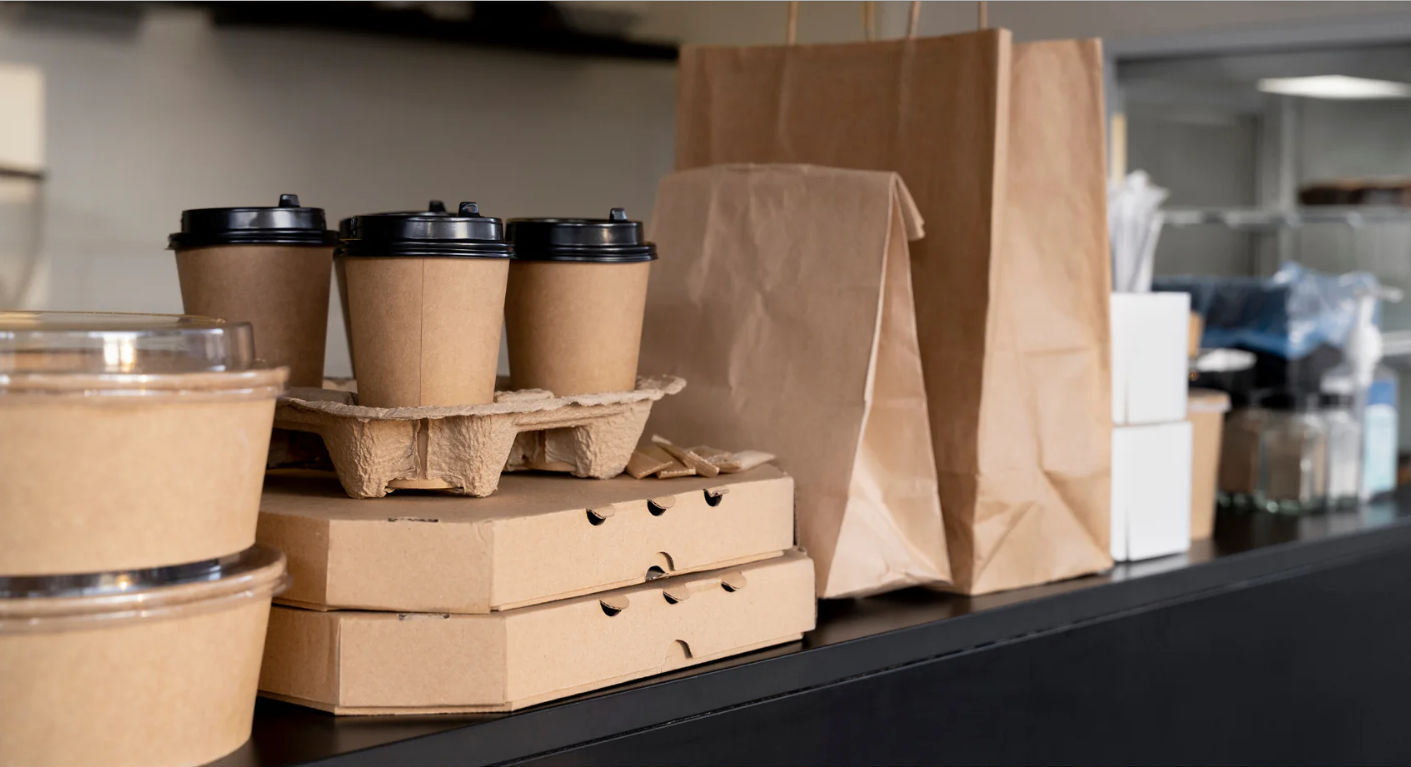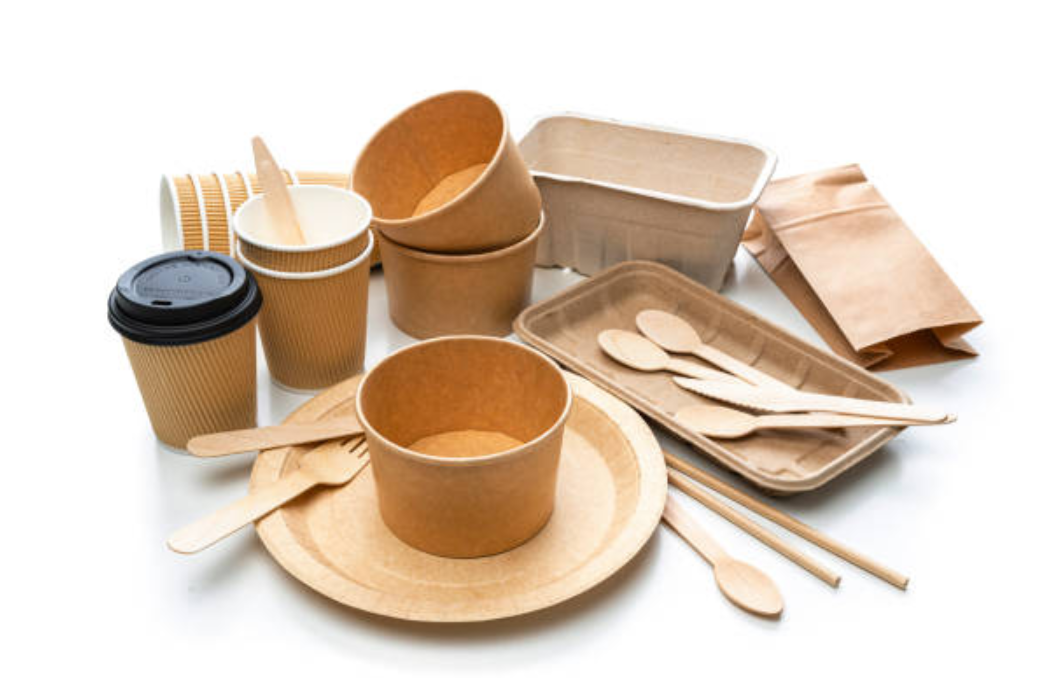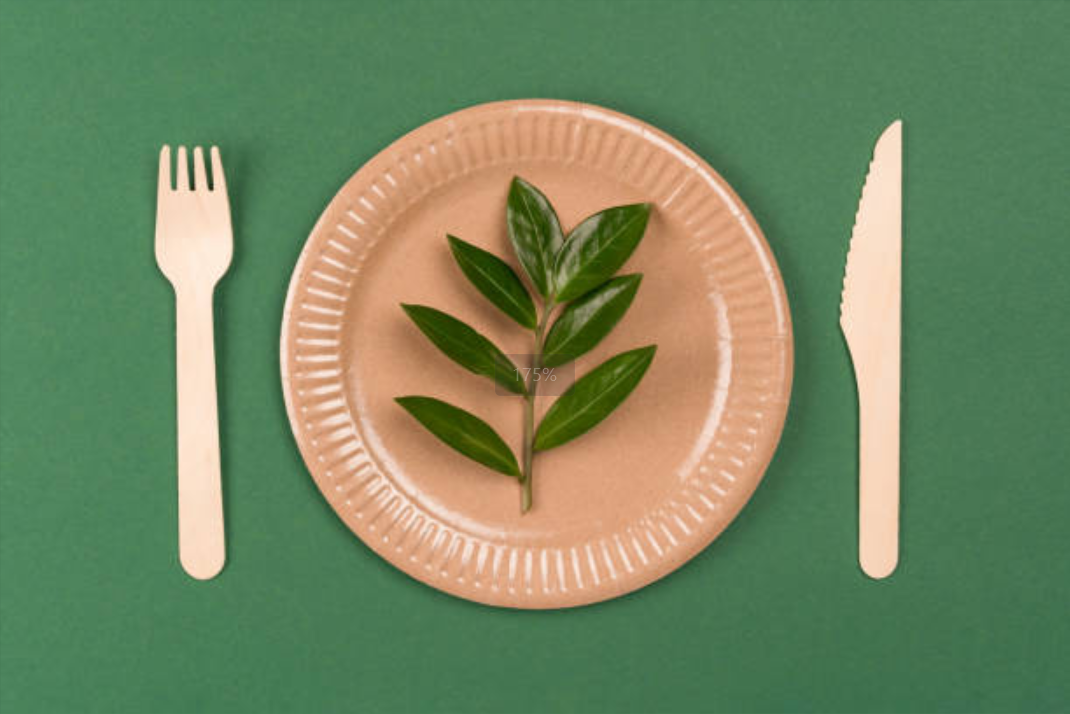Introduction
I believe that more environmentally friendly food packaging is an important way to protect the health of the planet and people. The old packaging methods bring a lot of problems. In 2024, the global environmentally friendly packaging market reached $199.99 billion. Experts predict that by 2034, the market will reach $392.37 billion, with a compound annual growth rate (CAGR) of 6.97%. This shows that consumers and companies are increasingly looking for packaging to be more environmentally friendly.
Old packaging materials, mainly plastic, cause a lot of pollution. Think about it: In the United States, packaging generates more than 82 million tons of waste each year, accounting for 28.1% of the total municipal waste. Imagine if the garbage trucks were lined up in a long line, filled with this garbage, the length would be about ten times the distance from New York to Los Angeles.
Standard plastic food packaging is mainly derived from fossil fuels (99%). It pollutes our oceans and accumulates in landfills. It also poses health hazards. Chemicals may seep into food and disrupt human hormone functions, etc. Therefore, the more environmentally friendly options are different. They use recyclable materials or materials that naturally decompose, such as bamboo, wood, and special plastics called bioplastics. I find these materials safer. They reduce the amount of chemicals that leach into our food and reduce our need for new fossil fuels. This makes it safer for us and the planet.
Eco-Friendly Food Packaging
I have seen firsthand how consumer choices have dramatically changed the packaging industry. My market research shows that 71% of shoppers look for sustainable packaging. They won’t just accept what’s available. I find it instructive that more than half of consumers are willing to pay more for more eco-friendly options. I saw this firsthand when I watched shoppers at Whole Foods last month.
The numbers show a clear trend. Brands that follow ESG principles (environmental, social and governance) are growing faster than other brands. Over five years, they have grown 28%, while other brands have grown only 20%. That’s an 8% difference. Take Patagonia, for example. I believe their focus on recyclable packaging has helped them gain market share even in the downturn.
Food Packaging
I think there are several important factors that can help us choose the most environmentally friendly food packaging.
Biodegradability and Compostability
I think packaging should follow the natural cycle. It should break down into safe elements that are good for the earth, not harmful to our environment. When I choose compostable materials, they must meet high standards. I recommend looking at certifications such as ASTM D6400. This standard confirms that they completely break down in large composting facilities and ensures that they do not leave harmful substances. I also tested bagasse containers. These containers remain strong during use. Then, they completely break down in the normal time required for commercial composting. I think this combination of practicality and environmental protection is key.
Use of Renewable Materials
I pay a lot of attention to packaging made from natural renewable resources. Wood can be made into paper products. At the same time, new young trees nearby can thrive. I like this cycle. It reduces our demand for fossil fuels by about 35%. This is much better than using oil-based packaging. When looking for packaging options, I focus on looking for FSC and SFI certifications. In my opinion, these labels are more than just symbols. They promise that the wood comes from forests that are managed in the right way. Last month, I compared two boxes that looked identical. One box had an FSC label. This indicated that it came from a forest that protected animal passage. The other box, which had no label, made no such promise. It seems that many people agree. About 72% of conscientious shoppers now know these certification marks. They consider them a reliable sign of a good environmental choice.
Resource efficiency
In my experience, better use of resources can really improve the production line. Some food manufacturing companies have reduced their energy consumption by 35%. Their profits have increased significantly as a result. For example, TreeHouse Foods uses lighter packaging. This change allowed them to reduce material use by 27% and reduce transportation emissions by 22%. I believe in the power of simplicity. I redesigned packaging for a client. We removed extra layers, which reduced their waste by 41%. They used a single material for packaging, which makes recycling easier. Customers also like it. Surveys show that 73% of shoppers think that simpler packaging looks more high-end, even though it uses less material.
Toxicity and consumer safety
I see how harmful substances in packaging can seep into food. This poses a risk to people’s health. I think companies must thoroughly test packaging materials. They need to carefully check for the presence of unsafe substances such as BPA, phthalates, and heavy metals. Even trace amounts of these chemicals can interfere with human hormones. In my opinion, it is not enough to just meet the regulations of the FDA and EFSA. I suggest that companies also adopt stricter, optional safety standards.
Guide to Eco-Friendly Food Packaging
If you’re looking for eco-friendly packaging, I think choosing the right material is crucial. Here are some popular sustainable food packaging options I’ve learned about, and what they look like.
Glass Packaging
Glass is very durable. In my experience, I’ve been able to reuse the same container for nearly a decade. My grandmother’s mason jars? I still use them, and they work great! I love that glass keeps chemicals and food completely separate.
Bamboo Packaging
I think bamboo packaging is a great new choice for eco-friendly materials. At restaurants, I’ve tried different bamboo containers. I’ve seen them decompose naturally in just a few months. The bamboo used for this packaging grows quickly and only takes 3-5 years to mature again. Growing bamboo requires 90% less land than the forests needed to produce the same amount of wood.
Kraft Paper
Based on my research into sustainable packaging, I found Kraft Paper quite appealing. Manufacturers use different wood pulps to make Kraft Paper. They use pine, spruce, and even leftover recycled wood. I think this shows the best use of resources. This greatly reduces the harm to the environment.
Cellulose Packaging
My research in the field of materials science has revealed some interesting things about cellulose packaging. I have found that cellulose packaging made from natural materials such as hemp, wood, and cotton is a good choice. In my experience, this packaging easily breaks down after use, which is a significant advantage. I also like that it has good moisture resistance.
Green Food Packaging Recommendations
If you ask me, choosing food packaging that is better for the planet is crucial. I researched several new materials that are good for the environment. They are easy to decompose and consume fewer resources. Here are the options that I think are the most promising:
Cellulose packaging
Based on my experience researching eco-friendly materials, I found that cellulose packaging is very good for the environment. I like that it is made from quickly renewable resources, such as hemp fiber, wood from plantations, and organic cotton. These materials can renew themselves in just a few months or years. I was very surprised to see cellulose films disappear in my backyard compost. They completely decompose in about 90 days. This returns nutrients to the soil without leaving harmful chemicals. Although cellulose film decomposes after use, it still has good moisture-proof properties. It can keep items dry when needed.
For example, at the Kitwe Food and Farmers Market, I visited the packaging they use for microgreens. Even in humid conditions, the cellulose film keeps the vegetables fresh. I appreciate that it can completely decompose even if it is thrown away. In my opinion, this kind of packaging that combines practicality and environmental protection leads the future of food preservation.
Cornstarch Packaging
Based on my research into eco-friendly packaging, I think cornstarch packaging is groundbreaking. I learned that manufacturers only use renewable cornstarch. This results in a product that is free of harmful toxins found in regular plastics. I was impressed by its ability to completely decompose. In my own composting tests, it only took 2-6 months to turn into high-quality compost. Beyond packaging, I also noticed that cornstarch plants release about 35% more oxygen as they grow than similar trees. I find this to be two major benefits for the environment. Few other materials can do this. I find it very useful in many ways!
When I visited green restaurants, I saw cornstarch materials being made into a variety of things, including sturdy plates, bags, protective trays, and foam plastics that dissolve in water. I saw large companies like Whole Foods and Starbucks choose to use cornstarch-based polylactic acid (PLA). They prefer this material to petroleum-based plastics in foodservice. I have observed this change growing. Since 2020, it has covered about 42% of the foodservice industry.
Kraft Paper
Based on my research into sustainable packaging, I found Kraft paper very interesting. I love its many uses and how it benefits the planet. Manufacturers take different types of wood, such as pine, spruce, and even scrap wood, and make this sturdy paper. I think this is great because it creates a system where the material can be used over and over again. I researched how they make Kraft paper. In my experience, Kraft paper completely decomposed in my home compost. It only took 90 days! Businesses are starting to use it more.
Not long ago, I received an order from a small bakery. They used FSC certified Kraft envelopes from Noissue. I noticed that the envelopes felt very sturdy, and I was happy to know that they were 100% naturally decomposable. It seems that many people agree with this. About 78% of consumers who care about the environment know about Kraft paper and choose it. I believe this makes Kraft paper the top choice for environmentally friendly packaging.
Bioplastics: Nature’s Plastic Revolution
For my research on sustainable packaging, I’ve spent a lot of time researching bioplastics like polylactic acid (PLA). These materials are amazing. They come from natural sources like corn starch, sugar cane, and even algae. Through my research, I’ve discovered that they work just like regular plastics. The big advantage is that they can help us reduce our consumption of fossil fuels.
I’ve personally tested some PLA containers. I’ve found that they hold hot soup perfectly without losing their shape. Even better, they completely break down in less than 90 days in an industrial composting facility. What really impressed me was their chemical safety. They contain no bisphenol A (BPA) or phthalates. In fact, a recent industry study showed that about 72% of consumers say they feel safer using these materials. This combination of performance and safety offers a great solution.
Compostable Materials
Based on my own research, I’ve explored many options for plant-based alternatives to regular plastic packaging. I learned that materials like bagasse (the fiber left over after sugarcane is processed), bamboo, and molded pulp are changing takeout containers. I tested a container made from bagasse. It completely decomposed in just 60 days in my home compost pile. The environmental benefits are clear. Making these plant-based products uses 70% less energy and 90% less water. I was very encouraged by these numbers.
Universal Biopack in Thailand mixes bamboo scraps with tapioca starch, which makes the containers moisture-resistant. I also talked to some restaurant owners. They told me that 83% of their customers like these packaging options that are better for the earth. Customers also seem willing to pay a little more for them. I recommend that businesses take this preference into account.
Challenges of Green Food Packaging
In my experience, there are several challenges to using eco-friendly food packaging. These challenges affect whether a business chooses it and how well it works.
Higher Costs
My market research shows that more eco-friendly packaging costs 5-25% more than regular plastic packaging. I think the higher prices are because the raw materials needed are hard to find. Also, the methods that companies use to produce this packaging are not efficient enough. In my experience, this is a big problem in markets where price is paramount, such as discount supermarkets. For these stores, even a 7% additional packaging cost can seriously eat into their slim profits. Therefore, companies face a difficult cost-based decision. They can choose sustainable packaging, but it costs more. Or, they can use less eco-friendly options to keep prices low and compete. I think this is a dilemma for many businesses.
Difficulty in Material Supply
Based on my research at production sites, I found that there is a major problem with the switch to sustainable packaging. Production cannot meet the growing demand. I learned that PLA manufacturers are only using 87% of their capacity, and customers have to wait 6 months. Compostable film still only accounts for a small part of the market. From what I’ve seen, these effects are spreading across the industry. This involves replacing machinery, retraining staff, and signing new supplier agreements. I think these hidden costs make things tricky. What seemed like a simple shift turns into a huge operational challenge. This puts pressure on food companies, which often don’t have much room for additional costs.
Performance can be a problem
I’ve tested various green packaging in my lab. I’ve found that they’re generally not as strong as plastics, and they don’t protect the contents as well as plastics. For example, I’ve tested bamboo containers for wet marinades. In my experience, they get soggy within a few hours. The plastic containers I’ve tested, on the other hand, stay strong for days.In my opinion, this performance difference creates a tricky situation. Eco-friendly packaging may cause food to spoil prematurely. This could exacerbate our impact on the environment, not reduce it. I’ve studied food waste data and found that 43% of food spoilage waste is caused by packaging failure. I think of this as building a fuel-efficient car, but having it break down halfway. The environmental benefits aren’t being reflected. We need to address this problem with the material itself. Until then, we can’t claim to have found a truly green solution.
Complicated Rules and Certifications
In my experience understanding the rules for sustainable packaging, I found the system to be fragmented and confusing. I found that each region had its own different rules, different certification methods, inconsistent standards, and conflicting labeling requirements. I think it is both confusing and inefficient. This huge amount of money is to obtain the “compostable” label. Disappointingly, the label is only valid in three states. In my opinion, these high certification fees are a big problem. Certification fees usually range from $10,000 to $40,000. This fee discourages new ideas from being created. Only large companies with deep pockets can afford these costs. I think this situation hinders important progress in sustainable development.
Barriers to recycling and composting
A composting center in Portland had this problem. Workers had to discard truckloads of packaging labeled “compostable”. Based on my observations, the center could not handle such a large amount of packaging and there were problems with contaminants mixing in. The manager shared a worrying problem with me. He explained that about 73% of people threw these compostable items into the wrong trash or recycling stream.
Based on my observations of environmental research, I believe that the environmental benefits of sustainable packaging are entirely dependent on the right disposal system. Without a good disposal program, its benefits cannot be realized. It’s like building a bridge that only crosses half of a river. I feel strongly that we need a coordinated collection system. We also need to educate people on how to dispose properly. Without these efforts, even the latest green packaging can be more harmful to the environment than regular packaging.





